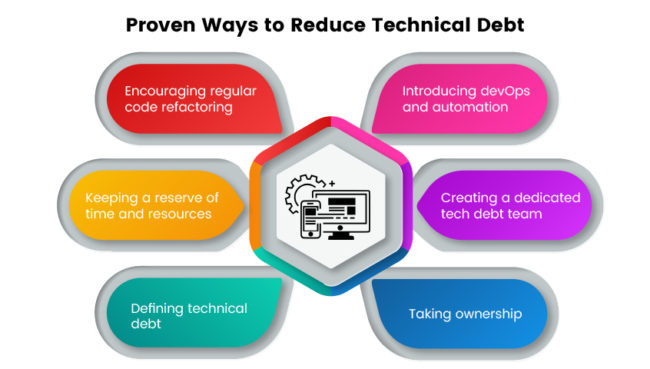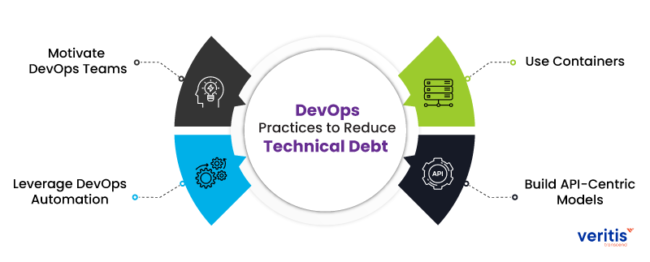
A Complete Guide on Technical Debt
What is Technical Debt?
If you’ve been in the software industry for any period of time, chances are you’ve definitely heard the term “Technical debt”
In software development, the concept of Technical debt plays an important role. Here, the team makes trade-offs during the development process to handle any type of issues and difficulties that may arise in the future. Technical debt is also known as code debt, tech debt, or in some cases, design debt in software companies. It comes into play when there is unfinished work or when a project faces significant complications, and technical debt helps in completing such projects. You can recognize technical debt in the domain of software development when developers are juggling multiple tasks to create a system and write code.
Technical Debt(TD aka Code debt), is a broad concept that includes many of the decisions made and shortcuts taken during the software development cycle.Negative outcomes caused by technical debt typically take the form of badly designed code, deterioration of productivity, additional unplanned costs, delivery delays, and degradation in the quality of the product.
As per definition on Wikipedia:
In software development, or any other IT field (e.g., Infrastructure, Networking, etc.) Technical debt (also known as design debt or code debt) is the implied cost of future reworking required when choosing an easy but limited solution instead of a better approach that could take more time
Usually, technical debt arises when developers are making various compromises to meet targets or deadlines. It becomes more pronounced as software becomes more complex.
What Causes Technical Debt?
Technical debt can arise in Software development, and it’s a common problem that software engineers face in today’s world. There are several contributing factors, including:
- Lack of Testing: technical debt occurs when testing is inadequate and insufficient. Incomplete coding can introduce vulnerabilities and hidden bugs, resulting in higher costs. Releasing code without proper testing can lead to technical debt. Organizations must establish plans and techniques to address technical debt caused by insufficient testing.
- Avoiding Documentation:lack of documentation makes it difficult for developers to understand how the code works, leading to reduced clarity when addressing future maintenance challenges. Having all the documentation in front of developer is very important and that requires less errors otherwise it causes technical debt.
- Lack of Technical Knowledge Technical debt is a major issue stemming from a lack of technical knowledge among various members of an organization, including employees and managers. Investing in staff training to improve technical knowledge can help reduce mistakes. Providing the training to the staff is very important to the employees to get a proper knowledge about technical stuff that helps to convey less mistakes.
- Limited Timeframes: software development often encounters technical debt due to tight deadlines. Companies may push developers to make trade-offs for faster delivery, but this can lead to increased costs when addressing technical debt later. Developer have the limited timeframes to complete the tasks with all efficiency and dedication.
- Problems Arising with Product-Market Fit: it is essential to understand the concept of product-market fit, which occurs when a product is successfully used by and satisfies users in the market. Organizations must pay careful attention to how their product fits in the market. If a product has unresolved issues or messy code, it may struggle to fit in the market, resulting in the accumulation of technical debt.
Types of Technical Debt
There are three types of Technical debt: Planned, Unintentional, and Unavoidable.
- Planned Technical Debt
A strategic decision that is prepared by a team that is software development organization to organized the fastest delivery of a product over addressing the technical problem. It consist the agreement in the development process with the intention of revisiting and convey it later. One of the best example of Planned technical debt is a organization of CRM development that company has to launch a product in the market in a short period of time. The plan consist a timeline for communicate the technical debt. The team execute to refactoring, revisiting the code or building very important improvement while they have extra time and resources.
- Unintentional Technical Debt
Unintentional technical debt is also known as technical debt. It occurs rarely when the developer’s not able to understand the requirements or to build it just to fulfill the market need. If the management is not done properly then it causes debt. Unintentional Technical Debt assemble slowly and goes unnoticed until it starts causing the problem. It also consist the introduction of unnecessary problem in the codebase, that is difficult to handle or that reached the pipelines.
- Unavoidable Technical Debt
In the technical debt, there are many problems that arises due to circumstances that are beyond the control of the development team or are inherent to the software development process. Unavoidable technical debt happens from the dependencies on third party libraries, services that have the limitations, bugs, or security vulnerabilities.
Managing Technical Debt in Software Development

IMAGE CREDIT:https://www.qentelli.com/thought-leadership/insights/technical-debt-ways-prevent-and-manage-it
There are several ways to manage technical debt in software development:
- Documentation & Identification: document the technical debt, including the reasons for its occurrence and its impact on the project. Regularly review code to identify areas with code smells, complexity, or other signs of technical debt.
- Planning & Scheduling: create a technical debt backlog with priorities, descriptions, and effort estimates for resolution. Allocate time and resources in each development sprint to address technical debt alongside new features and bug fixes.
- Monitoring and Tracking: establish a dashboard or reporting system to provide visibility into the status of technical debt remediation efforts.
- Embracing Good Engineering Practices: we all know that prevention is better than cure, and same applies to technical debt as well.Another way to manage the accumulation of technical debt over time is to follow and implement best SDLC practices throughout he SLDC cycle. This includes following the coding standards, software principles for designing, testing best practises, and good documentation. In addition to this, Devops principles and toools like CI/CD, deployment, code reviews, refactoring, and automated testing can help in early detection and rectification of technical debt.
- Start doing Hot fixes: any code change or update in the system which causes an issue with Severity level 5 can be immediately fixed with what we call as Hotfix. It’s basically a temporary patch, which is mostly already technical debt by itself. The Hotfix is mostly temporary and immediate solution that gives the team some breathing space to investigate the long-term permanent solution for the issue without disrupting the experience for the user any longer.

IMAGE CREDIT: https://www.veritis.com/blog/how-devops-helps-businesses-in-addressing-technical-debt
Final Conclusion
Technical debt often arises from inadequate and insufficient planning and testing. This article has provided insights into technical debt, its causes, types, and management strategies. When using it within your organization, keep these considerations in mind to minimize costs and ensure smoother software development processes.
However Technical Debt is not always bad, especially if it boosts the chances of a faster and more successful outcome. It’s considered okay if you have the resources to pay it back and give you the competitive edge. Also keep in mind that managing technical debt is a daunting task requiring a nuanced understanding of technology and business goals, effective communication with stakeholders, and a continual learning and improvement culture. By following the ways and best practices shared in this post, technical leaders can successfully navigate stakeholder conflicts, manage technical debt, and foster a culture of technical excellence.


